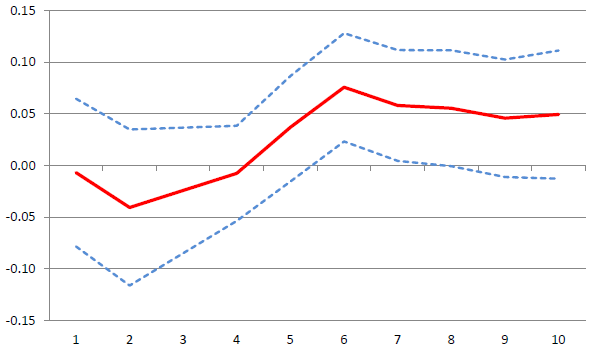| Author Name | Andrew S. GRIFFEN (University of Tokyo)/NAKAMURO Makiko (Keio University) / INUI Tomohiko (Faculty Fellow, RIETI) |
|---|---|
| Research Project | Analysis on Service Industries: Productivity, Economic Welfare, and Policy Evaluation |
| Download / Links |
This Non Technical Summary does not constitute part of the above-captioned Discussion Paper but has been prepared for the purpose of providing a bold outline of the paper, based on findings from the analysis for the paper and focusing primarily on their implications for policy. For details of the analysis, read the captioned Discussion Paper. Views expressed in this Non Technical Summary are solely those of the individual author(s), and do not necessarily represent the views of the Research Institute of Economy, Trade and Industry (RIETI).
Raising Industrial and Firm Productivity (FY2011-FY2015)
Analysis on Service Industries: Productivity, Economic Welfare, and Policy Evaluation
Prime Minister Shinzo Abe's growth plan, dubbed as "Japan Revitalization Strategy--Japan is Back," calls for promoting the active participation of women in the labor market while concurrently tackling the issue of low fertility as key goals in the areas of employment system reform and human capital enhancement. In reality, however, many women leave their jobs for childbirth. According to data provided by the Longitudinal Survey on Newborns in the 21st Century and used in our empirical analysis, only 25% of mothers remained in the labor force after childbirth while 55% of them were employed before childbirth in Japan. As shown in various other studies, it is highly likely that Japanese working mothers have no other choice but to leave their jobs for childbirth due to a lack of childcare facilities, a corporate culture in which women find it difficult to take maternity leave, or for other reasons. If so, it would be extremely difficult to achieve the two aforementioned goals set forth in the government growth strategy, i.e., addressing the issue of low fertility and promoting the active participation of women and working mothers in particular.
Apparently, there is a negative relationship between the number of children and the maternal labor supply. However, caution is needed to determine whether there exists any causal relationship between the two. Presumably, childbirth decisions are affected by a range of unobservable factors and conditions such as the individual abilities of women and the level of income earned by their husbands. For instance, it may be the case that some women are able to give birth and raise more than one child because of their strong abilities or because their husbands are high earners. Therefore, from the viewpoint of policymaking, it is quite important to identify the causal relationship between fertility and maternal labor supply. Indeed, if the number of children turns out to be larger for women who are highly capable, active in the labor market, and blessed with favorable conditions, rather than the greater number of children causing a decrease in the maternal labor supply, the implementation of measures designed to boost childbirth may not have any negative impact on maternal labor supply.
In this regard, economics offers a very interesting, natural experiment-like attempt. Namely, defining the occurrence of a twin birth as an unexpected exogenous increase in the number of children, some researchers empirically examined what impact this exogenous shock has on the maternal labor supply. Earlier research using U.S. Census data found that mothers with an unexpected birth of twins tend to reduce labor supply. Thus, in the United States, there is a negative causal relationship between the number of children and the maternal labor supply, and, hence, we must consider that measures to boost childbirth are in conflict with those to promote maternal participation in the labor market.
Does such causality exist in Japan? In order to find this out, we analyzed individual-level data from the Longitudinal Survey of Newborns in the 21st Century , a panel survey of approximately 53,000 individuals born in 2001 conducted by the Ministry of Health, Labour and Welfare. The answer to the question is "yes" in the short term but "no" in the long term. As shown in the figure, childbirth has a negative impact on maternal labor supply until approximately the time the child turns four years old but begins to have a positive impact from around the time the child starts school. We can see that childbirth has a positive causal impact on maternal labor supply from a long-term perspective. This is quite different from the findings in the previous research conducted in the United States, where the presence of a child continues to have a negative impact on the maternal labor supply until around the time the child turns 13 years old. This difference is inferred to be due to differences in the utility functions of Japanese and American mothers, particularly regarding the child's age and the cost of childrearing.
These findings imply that the two policies of increasing the fertility rate and promoting the participation of women (with children) under the Abe government are not in conflict. Measures designed to support the re-entry of mothers back into the labor force just as their children reach school age would be effective.
Figure: Impact of the number of children on maternal labor force participation

Notes
1. The vertical axis represents the marginal impact of one additional child on the labor participation of the mother, while the horizontal axis indicates the child's age.
2. The estimated marginal impact is denoted by the bold solid line with the 95% confidence interval indicated by the dotted lines.

